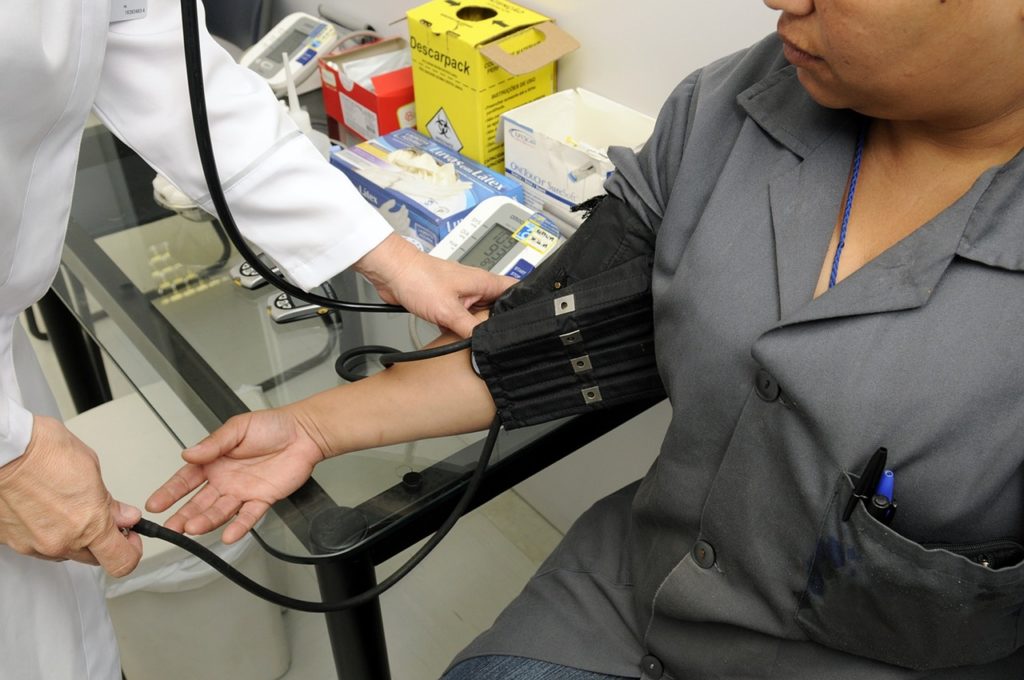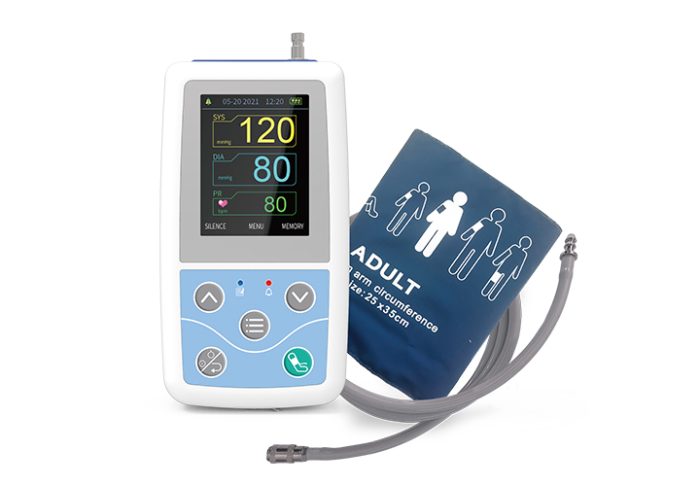What Makes the ABPM test in Bangalore Different from Clinic-Based Blood Pressure Monitoring?
The Benefits of the ABPM Test for Accurate Blood Pressure Evaluation
Ambulatory Blood Pressure Monitoring (ABPM) provides a sophisticated technique to evaluating blood stress. This technique gives continual, 24-hour information, capturing changes that occur throughout everyday tasks and rest. Such thorough monitoring not only enhances accuracy but likewise discloses essential patterns, helping to compare real hypertension and conditions like white-coat syndrome. Comprehending these nuances might bring about more reliable treatment techniques. What effects might this have for patient care and monitoring?
What Is Ambulatory Blood Pressure Monitoring (ABPM)?
Ambulatory Blood Pressure Monitoring (ABPM) is a method that enables continuous blood pressure assessment over a 24-hour period, offering a comprehensive photo of a person's high blood pressure fluctuations. ABPM test in Bangalore. This strategy utilizes a mobile device that instantly gauges high blood pressure at regular periods throughout the night and day. As people set about their everyday activities, the gadget catches information mirroring their blood stress variations throughout different times and circumstances, consisting of rest and physical exertion.ABPM is particularly valuable for identifying conditions such as hypertension, as it can identify in between real hypertension and white-coat disorder, where clients show elevated analyses in scientific settings yet not in their day-to-day lives. By providing an in-depth sight of blood pressure adjustments, ABPM help health care carriers in making educated choices concerning medical diagnosis and treatment. In addition, it boosts the understanding of high blood pressure patterns, allowing tailored administration techniques for clients
Continual Monitoring for Improved Precision
Continual monitoring of high blood pressure through ABPM greatly boosts the precision of readings compared to conventional techniques. This strategy permits high blood pressure dimensions at regular intervals throughout the night and day, recording changes that might occur due to daily tasks, tension, or other aspects. Unlike single analyses taken during a center check out, ABPM provides an extensive profile of a person's blood stress over a 24-hour period.This continual evaluation causes a lot more reliable information, making it possible for healthcare suppliers to identify patterns and prospective concerns that may go undetected with occasional measurements. It additionally aids differentiate in between real hypertension and white-coat disorder, where people display elevated readings as a result of anxiousness in a scientific setting. By leveraging the benefits of continual monitoring, ABPM substantially enhances diagnosis and treatment techniques, ultimately contributing to better patient outcomes and more tailored medical care strategies.
Comprehending Blood Pressure Variability
Blood pressure irregularity refers to the fluctuations in high blood pressure readings that can occur with time as a result of various elements, including physical task, tension, and body clocks. This variability is considerable as it supplies understandings into a person's cardio health. ABPM test in Bangalore. As an example, aspects such as exercise can briefly raise blood stress, while relaxation may result in a reduction. Furthermore, the body's natural rhythms can create blood pressure to differ throughout the day, generally being reduced at night and greater throughout waking hours. High degrees of variability have actually been connected with raised dangers of cardiovascular occasions, making it vital for health care experts to check these changes. Understanding high blood pressure irregularity assists in customizing treatment strategies and assessing general health and wellness. Accurate assessment through approaches like Ambulatory Blood Stress Monitoring (ABPM) can record these variations, permitting an extra thorough assessment of a client's high blood pressure account
Recognizing White Coat High Blood Pressure
White coat high blood pressure, commonly described as white layer disorder, is defined by raised high blood pressure analyses in scientific setups as a result of stress and anxiety or anxiety. Identifying its signs and indicators is crucial for precise medical diagnosis, as false impression can cause unnecessary treatments. Understanding this sensation is necessary for reliable high blood pressure administration and client care.
Recognizing White Coat Disorder
Although numerous people show raised blood stress analyses in professional setups, this sensation, referred to as white layer high blood pressure, can obscure real state of their cardiovascular health and wellness. This condition happens when individuals experience stress and anxiety or stress during medical sees, resulting in momentary spikes in high blood pressure. Consequently, healthcare providers might misunderstand these analyses as indicative of hypertension. White layer syndrome highlights the importance of accurate blood stress assessment, as relying exclusively on in-office dimensions can bring about unnecessary treatments or misunderstandings regarding a client's health and wellness. Understanding this disorder is essential for clinicians, as it emphasizes the demand for alternate monitoring methods, such as ambulatory high blood pressure monitoring (ABPM), to acquire a more exact depiction of a patient's high blood pressure levels.
Signs and symptoms and Indicators
Many individuals might experience specific symptoms that suggest the existence of white layer high blood pressure. These symptoms can include elevated blood stress readings throughout medical brows through, gone along with by sensations of anxiousness or anxiety in a medical setting. Patients commonly report a quick heartbeat or sweating when connecting with health care professionals, which may exacerbate their blood pressure levels. Additionally, some people may observe a variation between their in-office blood stress analyses and those taken in your home, where they feel much more loosened up. Acknowledging these signs is necessary, as they can show that tension or stress and anxiety relevant to clinical setups is influencing their high blood pressure. Comprehending these indicators can assist in identifying white coat high blood pressure and figuring out the requirement for additional analysis.

Significance of Accurate Diagnosis
Accurately identifying white coat high blood pressure is important for efficient blood pressure monitoring. This condition occurs when a patient shows raised high blood pressure readings in a clinical setting due to anxiety or stress, while normal readings are videotaped in an extra kicked back setting. Misdiagnosis can result in unnecessary treatment, revealing individuals to potential drug adverse effects without any kind of actual health and wellness benefit. Making use of ambulatory high blood pressure monitoring (ABPM) is crucial in distinguishing true hypertension from white coat syndrome. ABPM supplies continuous blood pressure measurements over 24-hour, enabling a detailed analysis that can assist medical care service providers make notified decisions. Inevitably, accurate identification of white layer high blood pressure warranties patients receive suitable treatment and avoids the challenges of mismanagement.
Assessing Nocturnal Blood Pressure Patterns
Assessing nocturnal high blood pressure patterns is important for recognizing an individual's overall cardiovascular health and wellness. Nighttime dimensions can expose substantial variations in high blood pressure, which may show high blood pressure irregularity. Furthermore, these patterns are carefully associated with heart wellness, highlighting the relevance of continual monitoring beyond conventional workplace visits.
Importance of Nighttime Measurements

Nighttime blood stress dimensions are typically vital for comprehending a person's total cardio health. These readings supply vital insights into how high blood pressure behaves throughout sleep, which can vary substantially from daytime levels. Checking nocturnal blood stress permits for the identification of abnormal patterns, More Help such as non-dipping or reverse-dipping sensations, which might indicate an enhanced danger for cardiovascular occasions. In enhancement, nighttime assessments can assist review the efficiency of antihypertensive treatments, making certain that medicines are suitably taken care of. By capturing high blood pressure changes throughout the night, medical care experts can develop more personalized treatment strategies, inevitably boosting client results and minimizing the possibility of long-lasting difficulties connected with hypertension. This emphasizes the importance of extensive blood pressure examination throughout the day and night.
Finding Hypertension Variability
Exactly how can the variability of nocturnal high blood pressure patterns educate hypertension monitoring? The evaluation of nocturnal blood pressure via the Ambulatory Blood Pressure Monitoring (ABPM) examination exposes essential changes that frequently go undetected in conventional measurements. These patterns can suggest the visibility of "non-dipping" hypertension, where high blood pressure stops working to drop during sleep, recommending an enhanced cardio danger. By determining such variability, doctor can customize interventions much more efficiently, adjusting treatment strategies based on the patient's specific nighttime high blood pressure actions. Recognizing these patterns likewise aids in examining the effectiveness of antihypertensive medications, ensuring that patients accomplish suitable blood stress control throughout the night and day. Subsequently, nighttime assessment comes to be crucial in extensive high blood pressure management.
Connection With Heart Health
Understanding nighttime blood pressure patterns not just aids in high blood pressure administration yet likewise has significant effects for heart health and wellness. Study suggests that uncommon nocturnal blood stress readings, such as non-dipping or reverse dipping patterns, are linked with increased cardiovascular dangers. During sleep, high blood pressure commonly declines, a phenomenon crucial for cardiovascular healing. When this decrease is lacking, it may signal underlying concerns such as autonomic dysfunction or raised arterial rigidity. Additionally, individuals with elevated nighttime blood stress are at an enhanced danger for cardiovascular disease and stroke. Consequently, making use of ambulatory high blood pressure monitoring (ABPM) to evaluate these nighttime patterns can supply vital understandings, permitting customized interventions that better protect heart health and wellness and enhance total person outcomes.
Customizing Therapy Strategies Based Upon Real-Life Information
Customizing treatment strategies based on real-life data includes leveraging continuous blood pressure sites checking to develop customized health care techniques. The Ambulatory Blood Pressure Monitoring (ABPM) test supplies a complete account of a patient's high blood pressure variations throughout daily tasks. This detailed information allows medical care carriers to recognize patterns that may be neglected in traditional office visits.By analyzing fluctuations in blood stress throughout various times and conditions, medical professionals can adjust medicines, does, and lifestyle suggestions to better suit specific client needs. This customized approach not just enhances the efficiency of therapy strategies however additionally lowers the likelihood of unfavorable responses to medications.Furthermore, real-life data can expose prospective triggers for hypertension, leading to positive interventions. Generally, tailoring treatment based upon continual monitoring fosters an extra reliable, patient-centered strategy to handling high blood pressure and enhancing lasting health and wellness end results.
Enhanced Individual Compliance and Interaction
While typical monitoring methods may restrict patient participation, the usage of Ambulatory Blood Stress Monitoring (ABPM) substantially enhances individual conformity and engagement in their own medical care. By permitting clients to put on a portable gadget that videotapes high blood pressure over 1 day, ABPM encourages individuals to take an active duty in their health administration. This continual monitoring provides a much more detailed view of high blood pressure changes, motivating patients to understand their condition better.Moreover, ABPM cultivates a setting where clients can review their analyses with healthcare companies more meaningfully, bring about informed decision-making. Individuals come to be extra bought adhering to prescribed treatments and way of life adjustments when they see real-time data showing their health condition. The shift from passive participant to active partner not just enhances compliance however likewise enhances total health outcomes, making ABPM a beneficial tool in promoting person involvement in hypertension monitoring.
Frequently Asked Concerns
Just how Lengthy Does an ABPM Examination Usually Last?
The ABPM examination generally lasts 24 hr. Throughout this period, it gauges high blood pressure at routine intervals, giving a complete analysis of an individual's high blood pressure patterns throughout their daily activities and rest.
Are There Any Kind Of Dangers Connected With ABPM Screening?

Can ABPM Be Utilized for Kids and Adolescents?
ABPM can be used for children and teenagers, supplying vital insights right into their blood pressure patterns. Appropriate devices sizing and interpretation by skilled professionals are necessary to guarantee precise analyses and stay clear of misdiagnosis.
Exactly How Is ABPM Different From Typical Blood Pressure Monitoring?
ABPM varies from you can try this out conventional monitoring by providing continual high blood pressure readings over 24 hours, recording variations during daily activities and rest, whereas standard methods usually count on solitary measurements, potentially missing important fluctuations in blood stress.
What Should People Do During the ABPM Test?
Throughout the ABPM examination, patients ought to preserve regular activities while avoiding heavy workout, too much high levels of caffeine, and cigarette smoking. They need to also keep their arm still when the gadget blows up, ensuring accurate readings throughout the monitoring period.